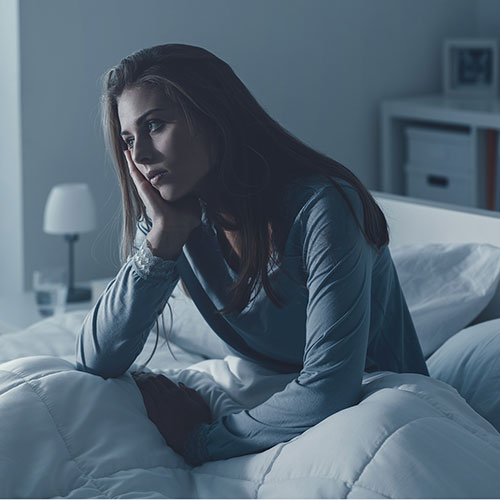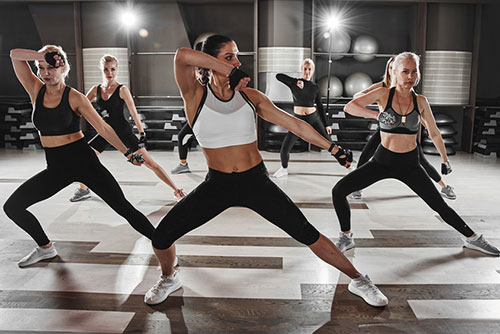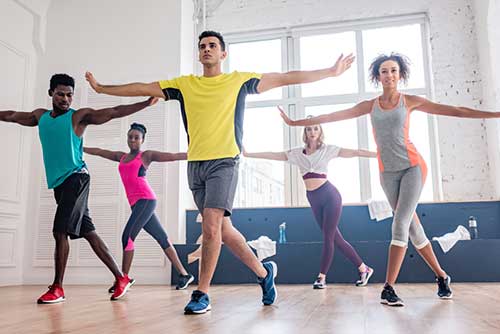Nearly all of us struggle with sleep no matter what disciplines you exercise. It may be due to our racing thoughts or sensitive reactions to every noise and movement. You may toss and turn and find yourself waking up throughout the night disrupting your sleep, and subsequently your day as well.
Your state of sleep impacts almost every aspect of your health. One of the most common things that keeps us up at night is stress. We also know that being physically active leads to better sleep. Exercising helps eliminate stress by clearing our minds and removing the symptoms of stress from our bodies.
Exercise actively increases body heat, which signals the body to produce melatonin, the sleep hormone, at night. Additionally, burning more energy with exercise increases your levels of adenosine, a hormone responsible for making you feel tired and sleepy besides improving your mood and making you feel happy and satisfied. This satisfied state of content makes falling asleep a lot easier, especially if you deal with anxiety or mild insomnia.
Therefore, the best way to help you make that race toward shut-eye fast is to schedule in a workout. It does not matter what kind of exercise you do or at what time you exercise provided you move your body. Then again when you exercise is a matter of personal preference. Working out in the morning can help you wake up and feel more energised throughout the day. Afternoon workouts sessions are best in case you want to push yourself, as you will be at your peak physical performance level. Despite whatever you have heard, night-time workouts about three hours before bed can help you fall asleep faster. Therefore, depending on the person, the best time to work out is whenever you can commit to making your workout consistent. So, work your muscles with these workouts or yoga poses to get a good night’s sleep.
WORKOUT THOSE MUSCLES
Any type of exercise, be it resistance training or cardio training, has shown to improve sleep. So, all that matters is that you move your body. You can start with these light and fun workouts.
Go, Run

Literally! Especially if you are new to exercise. Take advantage of the weather and get some fresh air with your run. Running is an aerobic activity that reduces stress, boosts mood, increases alertness, and releases endorphins. It tends to give you a high that leaves you feeling good and makes you tired when it is bedtime. You can jog, run, or sprint at your own pace, just be sure to get those muscles moving.
Pump Some Iron
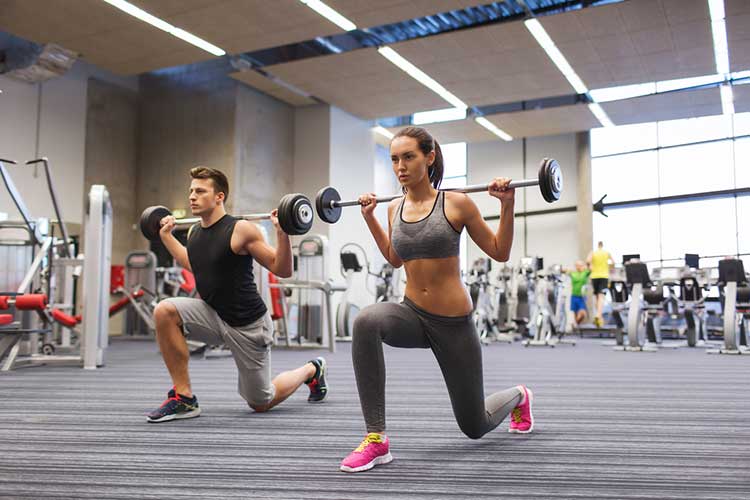
Lifting weights can help you get sleepy as it is very demanding on your whole body. Weight-lifting challenges your mind and body to become stronger. It releases hormones that act as an antidepressant, which can help you to fall asleep faster.
Go Kickboxing or Dancing
Cardio kickboxing and dancing are great exercise options to calm your mind. Both these aerobic activities will help you blow off steam, release tension and leave you smiling at the end. These workouts not only help improve your mood, they also help with digestion, energy, overall health, and more. Like other workouts there is an increase in your body temperature, and you sweat hard and then over time, your body will need the rest leading to a sound sleep.
YOGA TO THE RESCUE
Yoga is a gentle and restorative way to wind down your day. It helps get better sleep and reduce stress. The following yoga stretches can help you relax and enjoy a peaceful and sound sleep.
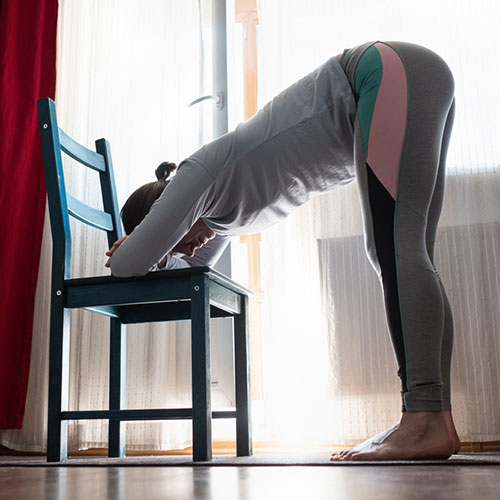
Standing Forward Bend Pose
Try the standing forward bend, a common yoga position, but with a bedtime twist. Stand in front of a chair, place a pillow on the chair. Take a deep inhale raising your arms overhead to lengthen your spine, exhale and fold your body forward from the hips until your forehead comes to rest on the pillow. Rest your arms also on the pillow and relax them completely. Stay resting here for at least 10 – 15 long breaths. Inverting your upper body this way soothes the nervous system and decompresses the spine, helping you relax and then sleep.
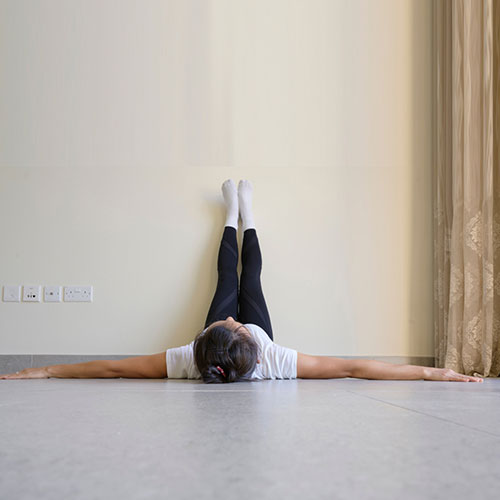
Legs Up the Wall Pose
Another yoga move that works to help you feel rested is one that can be done in your own bed – the legs up the wall post is perfect for this. Slide on the bed getting your legs closer to the wall or the bed headboard. Raise your legs up against the wall or the headboard forming a L with your legs and body, keep them up and relax. Remain here for 5 to 10 minutes. Come out of this pose by gently sliding away from the wall or headboard, roll to your right side and push yourself up with your arms. This gentle inversion of legs helps slow your system down.
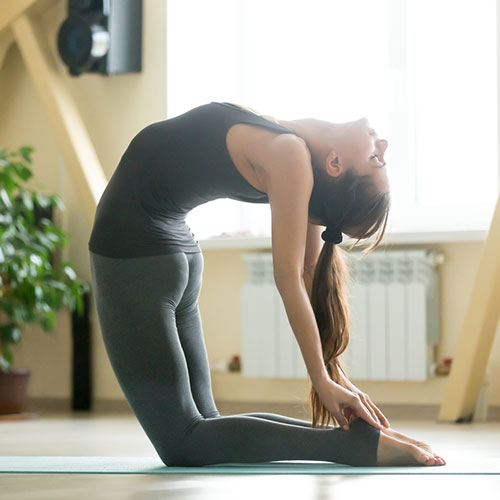
Try the Camel Pose
In case you had a bad day, combat the anxiety with the Camel, a pose that will soothe you without being overly complicated. Kneel on your knees, placing a blanket under your knees if they are sensitive. With the lower body stable, roll your shoulders back keeping the chest lifted and start to lean back, into a backbend, reaching your hands back one at a time to grasp your heels. Drop your head back as far as you can. Hold the position for 5-10 breaths. Release by bringing your chin back towards your chest and hands to your hips, slowly bring your body to an upright kneeling position. This heart opener improves spinal mobility and relieves tension in your back caused by sitting or slouching at the desk all day.

